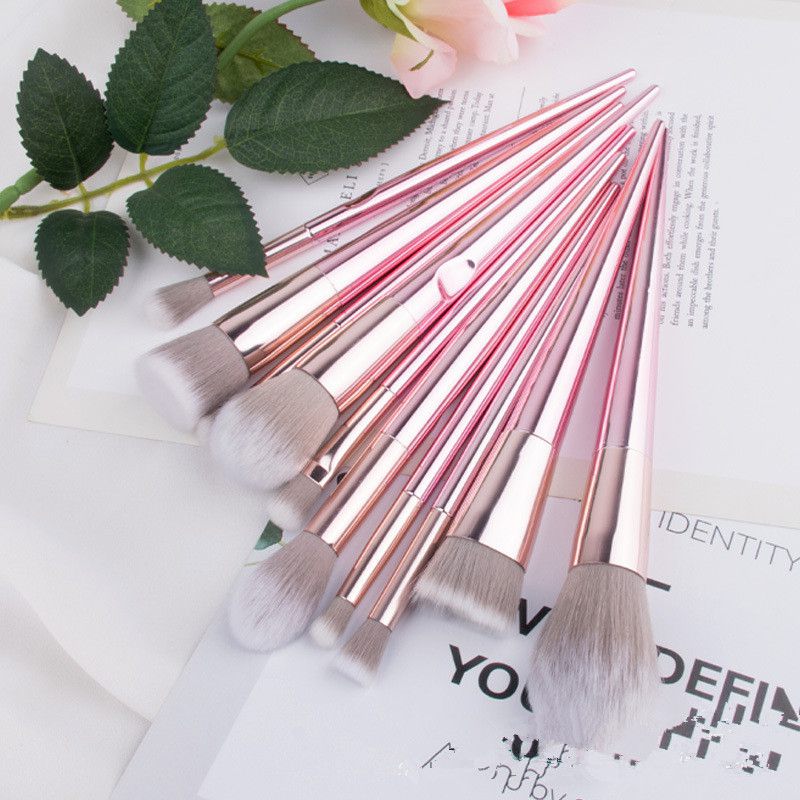Industry news
European Cosmetic Brush Industry Faces Raw Material Shortages: Impact on Bristle Supply Chains
- 80 Views
- 2025-08-23 01:32:18
European Cosmetic Brush Industry: Raw Material Shortages Disrupt Bristle Supply Chains
The European cosmetic brush industry, a cornerstone of the region’s beauty manufacturing sector, is currently navigating a critical challenge: raw material shortages that are destabilizing bristle supply chains. From luxury artisanal brands in Italy to mass-market producers in Germany, companies are grappling with delayed shipments, soaring costs, and production bottlenecks, raising questions about the sector’s resilience and future direction.
What’s Driving the Raw Material Crunch?
The shortages stem from a confluence of global and regional factors. First, global supply chain disruptions—exacerbated by lingering pandemic aftershocks, labor shortages in logistics, and geopolitical tensions (e.g., trade restrictions, energy crises in Europe)—have slowed the flow of key inputs. Bristles, whether natural (e.g., squirrel, goat, or badger hair) or synthetic (e.g., nylon, polyester), rely on complex networks: natural hairs often source from Asia or Eastern Europe, while synthetic fibers depend on petrochemical derivatives, whose prices have spiked amid oil market volatility.

Second, natural bristle constraints are tightening. Ethical and regulatory pressures have curbed animal-derived hair supplies: the EU’s stricter animal welfare laws (e.g., bans on live plucking) and consumer demand for cruelty-free products have reduced traditional sources like Siberian badger or Chinese goat hair. Meanwhile, climate variability—such as extreme winters in Mongolia affecting cashmere production—has further limited natural bristle availability, with some suppliers reporting a 30% drop in output since 2022.
Third, synthetic fiber shortages add to the strain. As brands pivot to synthetic alternatives to meet sustainability goals, demand for eco-friendly synthetics (e.g., recycled polyester, plant-based fibers) has outpaced production. Key raw materials for these synthetics, like recycled plastic pellets or biopolymers, face supply gaps due to limited recycling infrastructure and competition from other industries (e.g., textiles, packaging).
Impacts Rippling Through the Supply Chain
The raw material scarcity is reshaping European cosmetic brush manufacturing at every stage. For suppliers, cost inflation is acute: natural bristle prices have surged by 40–60% since 2023, while synthetic fiber costs have risen 25–35%, according to industry reports. This forces manufacturers to either absorb losses or pass hikes to brands, risking price sensitivity in a competitive market.
Production delays are another pain point. With lead times for bristle shipments stretching from 6–8 weeks to 12–16 weeks, companies struggle to meet retailer deadlines, leading to inventory shortages and lost market share. Smaller artisans, which lack the bargaining power of large corporations, are particularly vulnerable; some have paused production or shifted to smaller batch sizes.
Longer-term, the crisis is pushing the industry to rethink supply chain strategies. Many firms are diversifying suppliers—shifting from sole依赖 on Asian markets to partnering with Eastern European or North African producers—or investing in vertical integration, such as in-house bristle processing, to reduce dependency on third parties.
Adaptation and Innovation: The Path Forward
To mitigate risks, European cosmetic brush manufacturers are embracing two key trends: sustainability and innovation. Brands like Italy’s Acca Kappa and Germany’s Da Vinci are accelerating R&D into bio-based bristles, testing materials like bamboo fiber, cornstarch-derived polymers, and mushroom mycelium. These alternatives not only address supply issues but also align with EU sustainability mandates (e.g., the Circular Economy Action Plan) and consumer demand for eco-conscious products.
Supply chain localization is another focus. By sourcing raw materials closer to production hubs—for example, using European-grown plant fibers or recycled plastics—companies aim to reduce transit times and geopolitical risks. Some are also exploring blockchain technology to track bristle origins, enhancing transparency and trust with buyers.
Collaboration is emerging as a critical tool. Industry consortia, such as the European Cosmetic Ingredients Group, are advocating for policy support—including subsidies for sustainable material production and streamlined customs processes—to ease supply pressures. Meanwhile, partnerships between manufacturers and academic institutions are driving breakthroughs in bristle engineering, such as synthetic fibers that mimic the softness and durability of natural hair.
Conclusion
The raw material shortages facing Europe’s cosmetic brush industry are not merely a short-term disruption but a catalyst for transformation. While challenges like cost inflation and supply delays persist, the crisis is pushing the sector toward greater resilience, sustainability, and innovation. As manufacturers adapt—whether through new materials, localized supply chains, or collaborative solutions—the industry is poised to emerge more agile, with a stronger focus on ethical and eco-friendly practices that could











